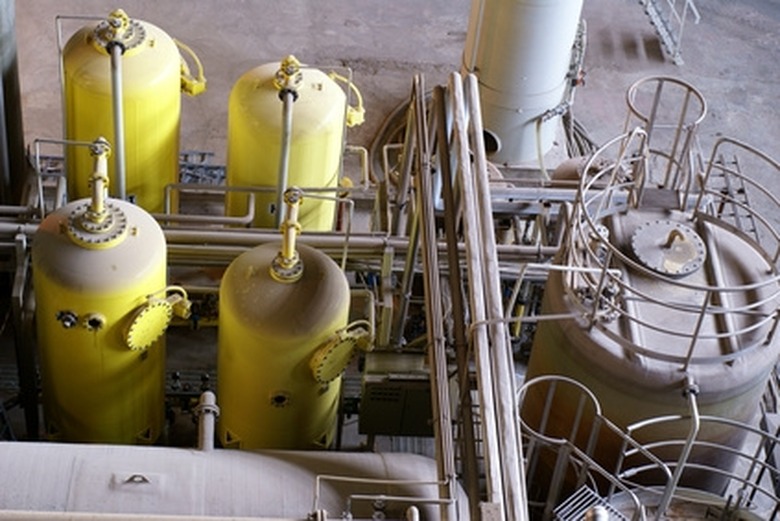How To Treat High Conductivity In Water
Water used in industries and households is often treated for removal of biological impurities, chemicals, undesired mineral content, abnormal pH and high conductivity. Conductivity is the result of the presence of mineral salts of elements like sodium, calcium and magnesium. These salts when dissolved in water, produce free ions that are capable of passing electrical current in water. High conductivity is related to high TDS (total dissolved solids) concentration in water, amount of dissolved mineral salts in water. Conductivity meters that measure conductivity also aim to measure the TDS of the sample for producing the result. For reducing the TDS of water on a domestic or an industrial level, you must seek help from an expert.
Step 1
Check the conductivity of the untreated water with a conductivity meter. The value should lie in the range of 0.005 – 0.05 S/m for drinking water.
Step 2
Procure a deioniztion plant or reberse osmosis plant of suitable capacity.
Step 3
Connect the untreated water supply to the plant inlet.
Step 4
Connect the plant outlet to the water supply inlet.
Step 5
Check the conductivity of the treated water with a conductivity meter. Ensure the conductivity is reduced to the desired level.
TL;DR (Too Long; Didn't Read)
Use professional help in procuring and installing the plant. Consult a professional for maintenance of the plant a regular intervals.
Cite This Article
MLA
Tripathi, Neha. "How To Treat High Conductivity In Water" sciencing.com, https://www.sciencing.com/treat-high-conductivity-water-8717444/. 24 April 2017.
APA
Tripathi, Neha. (2017, April 24). How To Treat High Conductivity In Water. sciencing.com. Retrieved from https://www.sciencing.com/treat-high-conductivity-water-8717444/
Chicago
Tripathi, Neha. How To Treat High Conductivity In Water last modified March 24, 2022. https://www.sciencing.com/treat-high-conductivity-water-8717444/
